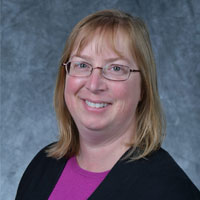The University of Utah’s Center for Synthetic Organic Electrochemistry (CSOE) is proud to announce that they received a $20 million grant from the National Science Foundation (NSF) to fund the CSOE’s Phase II development to improve the sustainability of synthetic chemistry. CSOE’s mission is to promote a safer alternative to traditional organic synthesis methods.
“If you think about industry, whether industry is making a pharmaceutical or a plastic, they’re doing a synthesis in an organic solvent and typically at high temperatures and sometimes at high pressures with possibly explosive materials. This is because most of the synthesis require oxidation or reduction reactions that typically is done chemically and not electrochemically. Those chemicals can cause safety issues when it comes to making pharmaceuticals and other value-added products,” says Shelley Minteer, professor of chemistry and CSOE director.
The Minteer Research Group works at the interface of electrochemistry, biology, synthesis, and materials chemistry, to provide solutions and address challenges in the areas of catalysis, fuel cells, electrosynthesis, sensing, and energy storage.
“We’re interested in applying electrochemistry to industrial chemical manufacturing in order to make it safer, greener, and more sustainable,” Minteer explained.
However, part of this process also involves convincing chemists to adopt electrochemical techniques.
“You have to train chemists who don’t normally do electrochemistry to do electrochemistry, so training is a part of what CSOE works on as well. That is, in addition to developing the reactions, electrodes, and materials needed to be able to do that chemistry,” says Minteer.
Being able to understand different areas of expertise and to convey those ideas has been a large part of CSOE’s success and focus.
“We’ve developed a team that’s very multidisciplinary,” says Minteer. Experts in synthetic chemistry, electrochemistry, material science, and computational science are included.
“Working in an interdisciplinary team, you have to find the common language so that you can all understand each other. It can be challenging, but, at the same time, rewarding to accomplish work that could not have been achieved with the knowledge of one particular field alone.”
Currently, the CSOE team is looking at a variety of different common transformations in the pharmaceutical industry.
“Reactions like cross-coupling, taking two small molecules and putting them together and working on being able to show to the community that there are many transformations that they can do electrochemically,” says Minteer.
Minteer is a member-at-large of the ECS Organic & Biological Electrochemistry Division and ECS Physical and Analytical Electrochemistry Division. She has served as technical editor for the Journal of The Electrochemical Society (2013-2016) and received the ECS Physical and Analytical Electrochemistry Division David C. Grahame Award (2019).
Learn how Minteer dealt with the challenges her research group faced amidst the COVID-19 pandemic in the series, The ECS Community Adapts and Advances.


